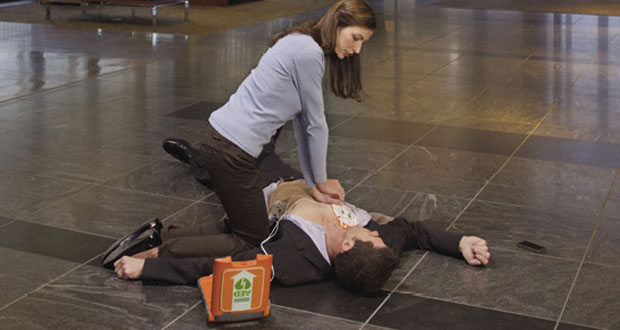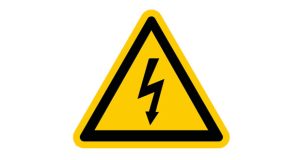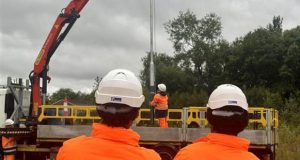Providing defibrillators in workplaces and public places can save lives says Millie McDonagh of defibshop, which is why it’s important that people are trained to use them correctly
Millions of people live with heart and circulatory diseases, with around 7.4 million people living with heart and circulatory disease in the UK: 3.9 million men and 3.5 million women. When it comes to the importance of defibrillators, the facts speak for themselves: 90-95 per cent of Sudden Cardiac Arrest (SCA) casualties will die if not treated immediately. This is why defibrillators are used widely across industries, saving thousands of lives. Those working within FM are often responsible for equipping both public spaces and workplaces with defibrillators, so it’s important not to overlook arranging effective defibrillator training to ensure staff are confident in using them in a crisis.
WHAT TO DO IN CASE OF A SUDDEN CARDIAC ARREST (SCA)
Sudden Cardiac Arrest can occur at any time in any place, so it’s crucial to be prepared. A University of Warwick survey of 4,000 UK adults discovered that nearly a third of UK adults are not likely to perform CPR (Cardiopulmonary resuscitation) if they witnessed cardiac arrest. This statistic is significant because for every minute treatment is delayed the chance of survival drops by 10 per cent.
So, what can you do to ensure you know what to do, when, and to ensure that your facilities are heart-safe?
Defibrillator and CPR training is highly recommended, it’s impact can save lives. The first step is knowing the four things to do if you witness a Sudden Cardiac Arrest. The ‘Chain of Survival’ refers to the four steps required to get a patient help as quickly as possible to increase their chances of survival.
THE CHAIN OF SURVIVAL
- Early recognition
If the casualty is unresponsive, call 999 immediately requesting an ambulance. The difference between life and death could be an immediate call to emergency services. - Effective CPR
It’s important to begin CPR, whilst requesting someone to locate and collect the nearest defibrillator. Performing CPR early can double the patient’s chance of survival. - Defibrillation
Beginning defibrillation as soon as possible could save a life. Once you have a defibrillator, switch the device on and follow its instructions. - Post-resuscitation care
Once an ambulance arrives, paramedics will ensure any further treatment is provided, and take the patient to hospital.
BEFORE YOU BEGIN TRAINING
Before you begin your in-depth defibrillator training, the five P’s of defibrillation are a great place to start. The five P’s provide knowledge of five things to be aware of when using a defibrillator, and they could make the difference to saving a life.
WHAT ARE THE FIVE P’S OF DEFIBRILLATION?
Pacemaker
Pacemakers are small devices placed into the chest or abdomen to control irregular heart rhythms. When using a defibrillator, it is important not to put the pads over internal pacemakers. Always make sure the pads are at least one inch away from a pacemaker for safe use.
Piercings
It’s absolutely safe to use a defibrillator on a casualty with body piercings, although there are precautions to be taken. Just like pacemakers, it’s important to make sure the pads are more than one inch away from any body piercings. Defibrillator electrode pads should never be placed over body piercings.
Perspiration
Before starting defibrillation, any perspiration on the casualty’s chest must be wiped away. Perspiration hinders pad placement and stops the electricity from entering the patient’s body and passing through the heart, and therefore becomes ineffective.
Patches
A transdermal patch, which attaches to the skin to deliver medication, can include nicotine, pain medication, hormone replacement therapy (HRT) and more. For defibrillation, it is important that any transdermal patches are removed, and the area wiped before treatment. Failure to do this can result in skin burns.
Pendant
Any jewellery laying between the electrode pads and the skin will stop the electric shock passing through the patient’s body. It is therefore crucial that any pendants or other jewellery which is within one inch of the pads is removed.
DEFIBRILLATOR TRAINING PRACTICES
Who should do it?
Defibrillator training isn’t just for health experts. Since cardiac arrest can happen anywhere, ensuring you and your team are trained to provide lifesaving treatment is as important across the FM sector as it is in healthcare.
It’s extremely important that those working in a public place are equipped to react if Sudden Cardiac Arrest happens to a visitor or employee. So, what does defibrillator training involve and how can I do it?
What should a good course include?
A good defibrillator training course will cover the administering of CPR and using an Automated External Defibrillator (AED). You will learn about the importance of defibrillation, the right time to use it, and how to do so safely. You’ll finish your course feeling confident about using an AED, should you need to.
Defibrillator training courses vary in length, but it’s normal to find four-hour intensive courses that teach you about using an AED and administering CPR for cardiac arrest.
How can I access training?
Whether you are looking for a beginner or a refresher course, training is available to everyone and can equip your team with crucial life-saving skills.
If you’re looking to become qualified yourself, or for your whole organisation, defibshop provides the highest standards of training courses. As the largest independent supplier of AEDs in the UK, our team are experts on everything you need to know to make your organisation heart safe.
Sudden Cardiac Arrest (SCA) can occur anywhere, at any time. Equip your team with the skills they need to save lives.





